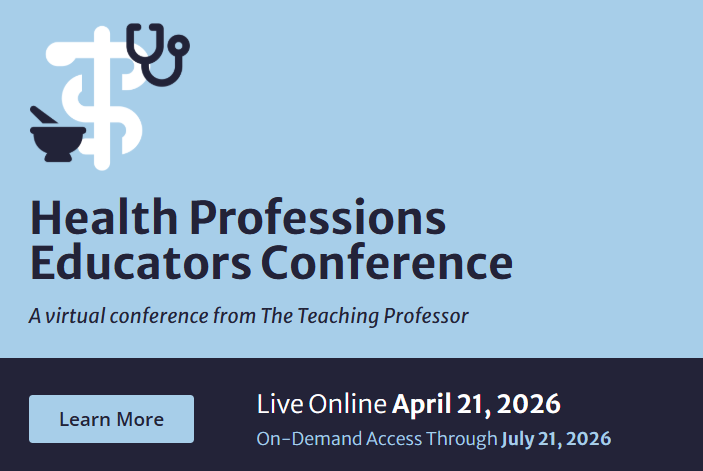Course evaluations are often viewed as a chore; one of those unpleasant obligations we do at the end of each course. In the Teaching Professor Blog post “End-of-Course Evaluations: Making Sense of Student Comments,” Maryellen Weimer is bang-on in stating that the comments students dash off can be more confusing than clarifying.
However, with the right approach, these course evaluations can be a very constructive tool. One of the keys is to solicit feedback throughout the course, rather than waiting until the end when it’s too late to make improvements that will make a difference to the current roster of students.
As both a teacher and an instructional designer for more than 25 years, I have been blessed to see things from a variety of perspectives. I have also learned some lessons the hard way! Here are 10 strategies for administering multiple informal course surveys that have proven very successful for me:
1. Ask the questions clearly. Perhaps one of the reasons student comments aren’t clear is because we’re asking somewhat ambiguous questions. Give the exercise the same time and attention you do when writing learning goals. Ask yourself, “What am I trying to assess?” Have a colleague you respect review your questions the first time out.
2. Ask the right questions. If you want to know if one of your primary learning outcomes is being/was achieved, ask. Sure it’s the student’s perspective, but it can be a valuable piece of information and you will spot a trend quickly. These questions work nicely in a Likert-scale multiple choice format. Other questions can be the same as, or similar to, the department’s formal end-of-course evaluations.
3. Ask for written comments. I have always found that written comments can be the most insightful, if interpreted fairly. As Weimer (2012) pointed out, two students can take two different meanings from the same question, so keep it simple.
Four questions I use are:
- What is one thing you like about this course (so far)?
- What is one thing you do not like about this course (so far)?
- What is one thing that could be improved in this course?
- Do you have any additional comments you would like to share?
4. Use an LMS or some other way of automating the process of administering the survey. This makes it easy for you and your students. Use the reporting and statistical analysis tools to help you interpret the results.
5. Share the results with your students. This is a critical step. Identify the items that you can deal with and follow through. Tell your students how you will address their concerns. Explain to the students the items that you cannot fix and pass these along to the appropriate departments, if necessary. I also told my students that I would publish the results, including my comments on my faculty homepage, and share them with their program coordinator and dean or academic manager, which I did. There were multiple short and long-term benefits from doing this: accountability, student buy-in, and trust from my academic managers. Risky perhaps, but well worth it in the long run.
6. Survey more than once. Perhaps one-third or halfway through the semester, and once more. Assess any progress you made from the comments on the first survey. This can even be an additional survey question. Don’t wait until the department’s formal end-of-course evaluation – by then it is too late. Your students will also appreciate your genuine interest in improving the course for them. If your course gets off track a little at the beginning, you will have ample time to get things back on track.
7. Don’t survey unless you are prepared to deal with the feedback. If you ask your students for feedback, summarize and share the results, and implement the things that are constructive, your students will feel empowered. They will take a different look at the course and become part of the growth process, your included. This was one of my course activities that my students appreciated the most.
8. Tell your students what you are looking for. Let them know it’s ok to be negative, as long as the criticism is constructive and not mean-spirited. I don’t allow them to name fellow students or other teachers, or make comments unrelated to the course.
9. If you are not inclined to use a survey/questionnaire approach, use a simpler tool. Try a “start-stop-continue” approach, a “one-minute” paper, or a simple poll. These can be done almost weekly or at the end of each module/lesson.
10. Keep your perspective (and humor) on things. Once you get the results/comments, interpret them carefully, but don’t overanalyze or internalize any criticism. Teachers whom I have assisted with this activity initially get very worried because students can be blunt. My advice? Treat the comments like judges scoring figure skaters in an international competition. Throw out the high one and the low one, and what’s left over is usually a good overall indicator. It might not be all positive feedback the first time, but as long as it is constructive, you have something to build upon.
At the start of every one of my courses, as one of the ice-breaker activities and introductions, I would ask my students to visit my faculty homepage and look at the course feedback results for previous cycles of this course. On the page they can see not only the feedback from students, but my responses to the individual comments. By doing this, I think I demonstrated that I was serious about the quality of the course and my performance. I would also point out that I expected the same level of quality insights and constructive feedback from them two or three times during the semester.
Greg Cooper, M.A. Ed. is an instructional designer with the Teaching and Learning Centre (TLC) at the University of Calgary, Alberta. He previously worked at Cambrian College for 27 years as an elearning designer and as a professor in face-to-face and online courses, and at the University of Wisconsin-Madison as a learning technology consultant.
Reference:
Weimer, Maryellen (2012, November 28). End-of-course evaluations: making sense of student comments. Faculty Focus, retrieved from https://www.facultyfocus.com/articles/teaching-professor-blog/end-of-course-evaluations-making-sense-of-student-comments/





